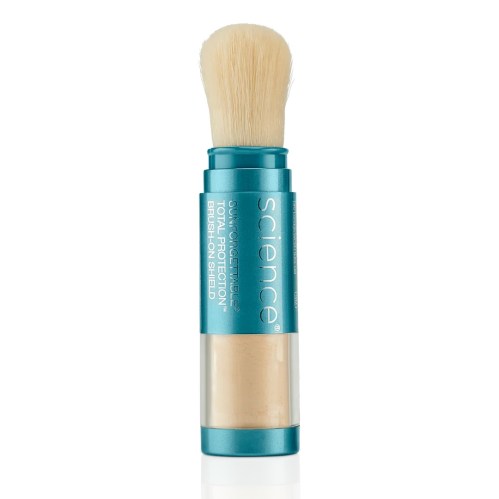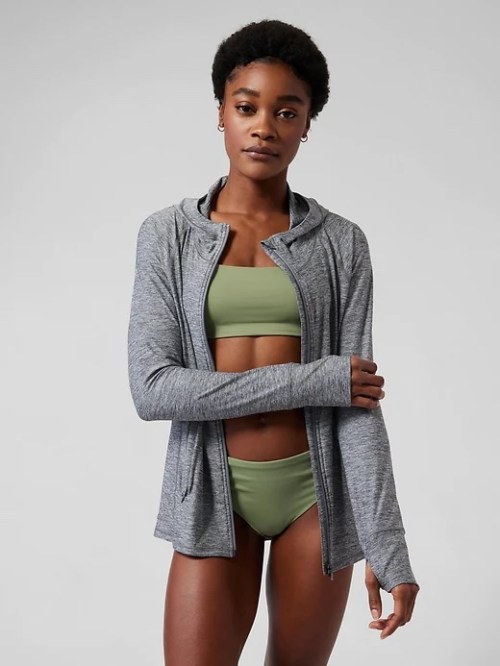Our editors independently select these products. Making a purchase through our links may earn Well+Good a commission
Why You Should Always Wear Sunscreen While Driving Your Car, According to Dermatologists
UV rays can damage your skin, even when you're on the road. Here, three dermatologists break down why you should wear sunscreen while driving.

You understand the importance of wearing sunscreen on your face every day, right? And you know that simply opting for an SPF-boosted makeup product won’t cut it? That’s great. But did you know that you need to protect your hands, arms, and any other exposed areas of skin, too—particularly while driving? See, so often, folks think that outdoor summer activities in the hot, beating sun are the biggest culprits for sun damage. In reality, it’s the overlooked daily activities that can wreak serious havoc. After all, while it’s pretty obvious to put on sunscreen before, say, laying out on the beach or going kayaking, it’s less obvious to wear sunscreen in the car. But trust us, you should always wear sunscreen while driving and keep a bottle of it in your car to reapply.
Experts in This Article
board-certified cosmetic dermatologist
board-certified dermatologist and founder of AmberNoon
board-certified dermatologist and clinical instructor of dermatology at Weill Medical College of Cornell University
UVA vs. UVB Rays
The sun’s harmful UV rays fall into two categories: UVA and UVB.
“UVA rays have a longer wavelength and are more associated with skin aging because they penetrate the skin more deeply,” says medical and cosmetic dermatologist, DiAnne Davis, MD, FAAD. As a result, NYC-based dermatologist Dr. Hadley King reveals that UVA rays are responsible for signs of aging like dark spots, freckles, fine lines, wrinkles, and a thinning, crepy texture. “UVB rays have a shorter wavelength and are more associated with suntans, sunburns, and blisters,” says Dr. Davis.
Board-certified dermatologist Erum Ilyas of Schweiger Dermatology Group in King of Prussia, Pennsylvania, says that an easy way to differentiate UVA from UVB rays is with the following wordplay: “Think UVA ages the skin; UVB burns the skin,” she says.
In short, UVB rays are more surface level, while UVA rays are more piercing. It should be of no surprise, then, that Dr. Davis says that UVB rays don’t penetrate glass but UVA rays most certainly do. This means that all that time driving, with sun beating through the windows and windshield, your skin could be at risk—if you don’t protect it beforehand, that is.
Car Windows and UV Rays
Nowadays, many car windows (and windows in general, for that matter) are designed with UV filters for both UVA and UVB rays. That said, not all are. “If a window specifies it has a UV filter for both UVB and UVA then you are likely ok,” Ilyas says. “The filters can be clear and do not necessarily require tinting.” That said, not all tinted windows are filtered windows. “There is thought to be a left-sidedness to some skin cancers because of the car windows in some cases,” she says. “Front windshields tend to block UVB and UVA but the side windows may not.” With this in mind, she suggests slathering on the SPF just in case.
Who should wear sunscreen while driving?
Everyone. “It’s important to note that the use of sunscreen is not just to prevent sunburn,” Dr. Ilyas says. “This is an important point to emphasize as many people who do not burn easily in the sun are under the false impression that they do not need to use sunscreens.” In reality, everyone is capable of developing skin cancer and, as such, everyone needs to be protected from the sun’s harmful UVA and UVB rays in order to do everything they can to prevent it. “Research and practice have shown that those with a tendency to tan easier than burn still get skin cancer but it is often diagnosed at a later stage as many simply think they are not at risk for it,” Dr. Ilyas adds for emphasis.
The Best Sunscreens for Driving
Thinking you’ll just throw your favorite sunscreen in your car and call it a day? Think again. “Sunscreen lotions and creams tend to separate and thin out in the heat,” Dr. Ilyas says. “When it’s time to apply it, it may come out as a slimy mess.” Meanwhile, like lip balm, sunscreen sticks tend to melt. “Sunscreen sprays are not easily applied in the car because the scatter from the spray can make a mess of your car’s interior,” Dr. Ilyas adds. This leaves us with the two best options: powder SPF (like Colorescience Sunforgettable Total Protection Brush-On Shield SPF 50, —one of Dr. Davis’ favorites) for the face and UPF clothing (like Athleta’s Pacifica Illume UPF Relaxed Jacket, which is lightweight enough for summer).
“Sun protective clothing, gloves, large frame sunglasses, and UV filters applied to the windows of the car would be the most reliable and consistent way to achieve sun protection while driving,” Dr. Ilyas assures us.

Colorescience Sunforgettable Total Protection Brush-On Shield SPF 50 — $69.00

Pacifica Illume UPF Relaxed Jacket — $98.00
Things To Remember About Wearing Suncreen While Driving
UV damage is cumulative. That means that every time your skin is exposed without protection, more and more damage is adding up.
“Once the DNA of our cells is damaged then our cells get to work with DNA repair activities,” Dr. Ilyas says. “Although we have some remarkable methods of resilience, if the DNA repair mechanisms are constantly being put to work then at some point they will fall behind or fail.” When this happens, the skin begins to prematurely age, making it difficult to bounce back.
“The best way to visualize this is to think of a town after a storm comes through that causes some damage,” Dr. Ilyas says. “If there are no other storms that come through for a long time then the town will have the time and resources to repair the damage and move on. However, if the town is subjected to one storm after the next, before they are finished repairing the last, at some point the time and resources to fully recover will be lost.”
So in case you’re still on the fence, do yourself a favor and never skip out on sunscreen while driving (or ever, really).
Sign up for the Well+Good SHOP Newsletter
Get exclusive deals on wellness, beauty, fitness, and food products that have been hand-picked by our editors.
Got it, you've been added to our email list.










